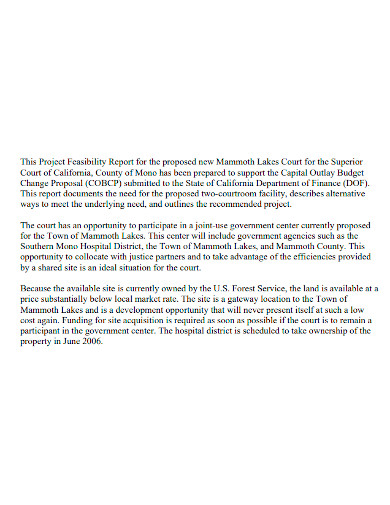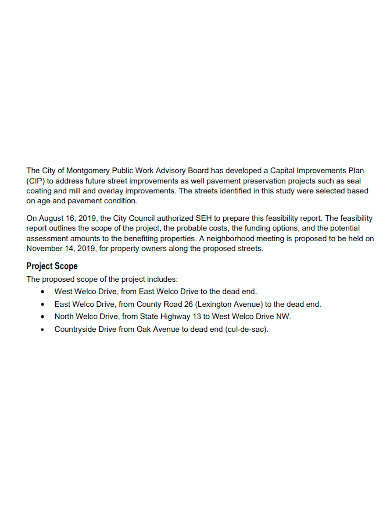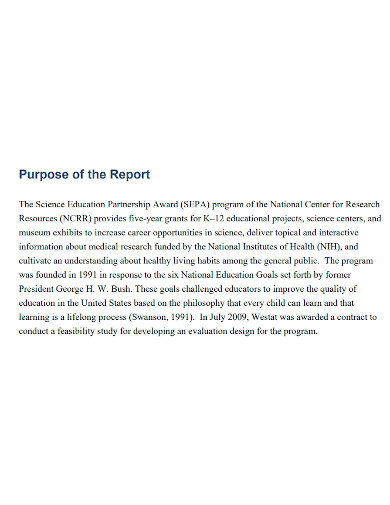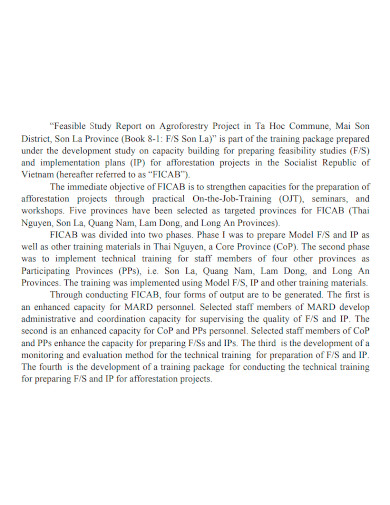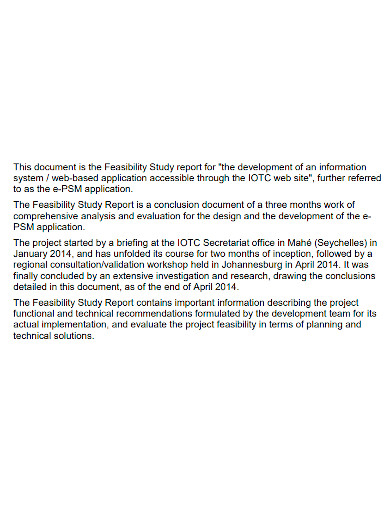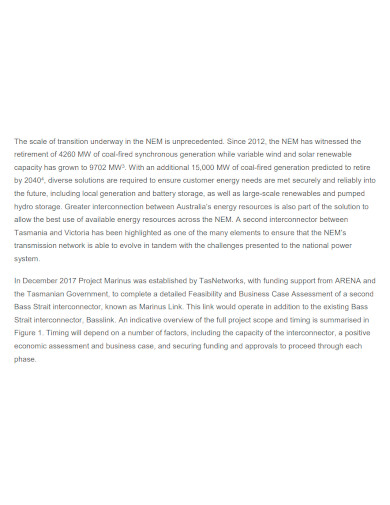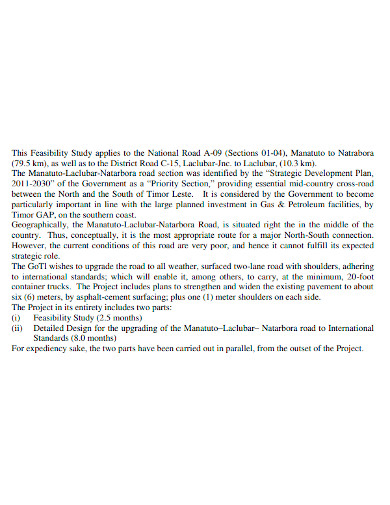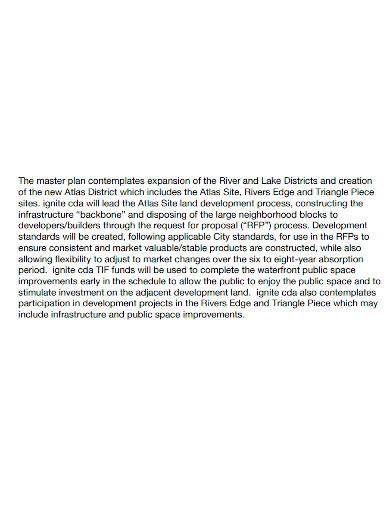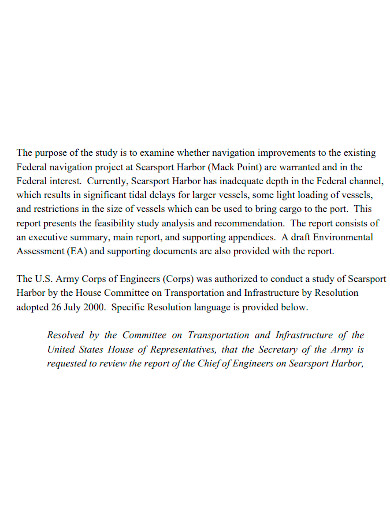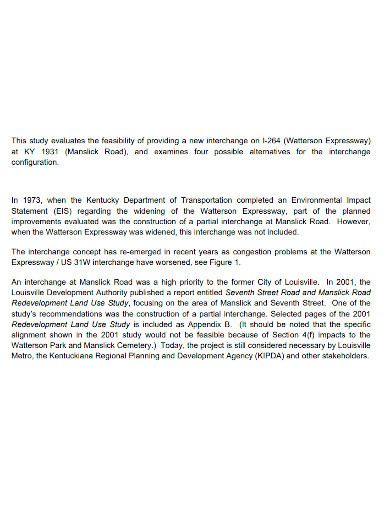Any sort of project requires time, effort and resources. In developing a new project, of course project coordinators like you would not want to see the venture fail. First and foremost, before development even begins, It is best to know whether a project is feasible or not. Set parameters for any potential problem you may encounter along the way and find solutions for problems regarding the project that you have right now. The best way to find out if a project is feasible or not is by drafting a Project Feasibility Report, this document makes sure that you don’t waste time and resources on something that may ultimately fail shortly after development.
10+ Project Feasibility Report Samples
Drafting a project feasibility report may not be easy for everyone. It requires a lot of data collection and analysis. It’s an undertaking that does require a lot of commitment to ensure the best results are presented to the investors and project heads. The fate of your project literally lies on this document, so it is best to draft a project proposal in the best way possible. To help you write your feasibility report, we have several examples listed below that you can study and take example of to ensure that your report is well written and well presented.
1. Project Feasibility Report Sample
2. Improvement Project Feasibility Report
3. Education Project Feasibility Report
4. Construction Project Feasibility Report
5. Agroforestry Project Feasibility Report
6. Project Feasibility Study Report
7. Formal Project Feasibility Report
8. International Project Feasibility Report
9. Project Financial Feasibility Report
10. Navigation Project Feasibility Report
11. Project Feasibility Final Report
What Is a Project Feasibility Report?
A Project Feasibility Report is an essential document of the initial stages of a project or plan. It aims to identify, explore, and evaluate the project’s solutions to save time and resources, if the project is worth the investment. In some cases, a project may not be feasible, and there are a lot of reasons for this, one may be the over-demand of resources, which not only takes resources from other projects, but may also cost more for the company than what they would earn from a venture that isn’t profitable.
Feasibility reports also assess the opportunities and threats present in the natural environment. A well written feasibility report should offer a historical background of the company or a project, descriptions of the products and services, accounting statements, marketing, policies, finances, tax reports, and details of operations. Overall, feasibility reports are an assessment of the practicality of a project or a plan.
How to Write a Project Feasibility Report
Regardless of project size, type, and scope, there are several key steps to consider in writing an such essential document for the development of a project. Usually used to sway the decision makers towards making a decision or the other, you have to make sure that you can help them in making an informed decision for the project. Let’s review the key steps in detail listed below.
-
Write the project description
First of all, you have to include the background of your project in the description. What your company needs and what services the project aims to promote. As an introduction, your description should also be convincing enough to make them continue reading your report. Tell them what they would gain personally or as an organization by taking your work into consideration.
-
Describe possible solutions for the project
To successfully take this step, you have to perform an alternatives analysis to make a description of possible solutions for the project. These solutions are tentative procedures or approaches that you can use in undertaking the project and to ensure its success.
-
List evaluation constraints
After describing the possible solutions to take, you have to put those solutions against a set of evaluation criteria. This will help in isolating the best possible solution that you can take, granted that it fits the desired evaluation criteria. Mapping out the criteria of the ideal outcomes that you are after will allow you to make the most practical and logical decisions for your project.
-
Propose the most feasible solution
After isolating the best solution based on your criteria and evaluation, use your experience and knowledge to state the best option in the best and most convincing way possible. Ensure that the investors realize that this solution will let the company keep to optimal project resources, and gain the best possible benefit for the company.
-
Conclusion
The last step in writing a project feasibility report is writing a conclusion by summarizing the project’s aim and purpose and re-stating the best possible solution for the project’s success. Explain why the company should choose your course of action by comparing statistics and data. Help them realize that your idea is the choice they are looking for. You also have to include the alternatives that you have come up with, how these alternative were evaluated and which alternative best fit the organization.
FAQs
Why feasibility study is important in a project?
Feasibility studies are important to help discern the pros and cons of undertaking a project before investing time and resources into it. This also provides crucial information the could prevent the company from carelessly entering a risky venture.
What is a project report?
Project reports are documents that provide details on the overall picture of the proposed business. It gives an account of the project proposal to identify the prospects of the proposed activity.
What is the purpose of reports?
Reports communicate compiled information as a result of a research or data analysis. Reports can be for a wide range of topics as long as it transmits information with a clear purpose. Well written reports are documents that are accurate, objective, and complete.
The importance of a feasibility study relies on the organization’s desire to get a project right. It uncovers new ideas that could potentially change the direction of the project. It’s best to make these decisions in advance rather than learning as you go only to discover that the project won’t work. Feasibility studies are always beneficial to a project as it gives you and the stakeholders a clear picture of the project and the parameters set all around it.
Related Posts
FREE 13+ Analysis Report Templates
FREE 12+ Requirement Analysis Templates
FREE 10+ Budget Report Samples
FREE 10+ Sample Cost Benefit Analysis Templates
FREE 10+ Project Financial Analysis Samples
FREE 10+ Post Implementation Review Samples
FREE 9+ Sample Technical Reports
FREE 8+ Sample Technical Analysis Templates
FREE 14+ How to Create a Daily Construction Reports
FREE 12+ Case Study Summary Samples
FREE 11+ Sample Executive Report Templates
FREE 9+ Project Progress Report Samples
FREE 9+ Sample Manufacturing Project Reports
FREE 6+ Sample Project Timetable Templates
FREE 5+ How to Write Investment Summary Samples

